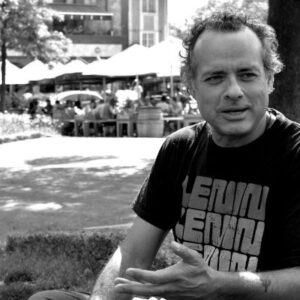Thailand Leads Southeast Asia: Parliament Approves Landmark Same-Sex Marriage Bill
 03-31-2024 ~ Thailand’s lower house endorses historic same-sex marriage bill, paving the way for southeast Asia’s first marriage equality law amid evolving LGBTQ+ rights landscape.
03-31-2024 ~ Thailand’s lower house endorses historic same-sex marriage bill, paving the way for southeast Asia’s first marriage equality law amid evolving LGBTQ+ rights landscape.
Legislators in Thailand’s lower house of Parliament have decisively endorsed a marriage equality bill, marking a historic step towards becoming the first Southeast Asian nation to legalize equal marriage rights for all people. On March 27, 2024, 400 out of 415 attending lawmakers voted in favor of the bill.
“This is the beginning of equality. It’s not a universal cure for every problem. Still, it’s the first step towards equality,” Danuphorn Punnakanta, an MP and chairman of the lower house’s committee on marriage equality, told Parliament while presenting a draft of the bill.
The bill must undergo approval by the Senate and receive endorsement from the Thai king. Following this endorsement, it would be published in the Royal Gazette and become law after 60 days. If it happens, Thailand will join Taiwan and Nepal as one of the few countries in Asia to legalize same-sex marriage.
The National Assembly has debated different versions of the legislation since December last year. Subsequently, the cabinet of Prime Minister Srettha Thavisin sent the bill to Parliament. Initially, four draft bills on same-sex marriage were proposed by various political parties, which were later consolidated into one. In 2020, the constitutional court upheld the constitutionality of the country’s marriage law, which only recognized heterosexual couples. However, it recommended expanding the law to ensure the rights of other types of couples.
The law, which redefines marriage as a partnership between two individuals rather than solely between a man and a woman, grants LGBTQ+ couples equal rights. These rights include marital tax savings, inheritance entitlements, and the ability to give medical treatment consent for ill partners. Additionally, under the law, married same-sex couples can adopt children.
However, the lower house did not adopt the committee’s suggestion to replace the terms “fathers and mothers” with “parents.” A government survey conducted late last year indicated overwhelming support for the bill, with 96.6 percent of respondents in favor.
The rights to marry and form a family are fundamental rights acknowledged in Article 23 of the International Covenant on Civil and Political Rights (ICCPR), a treaty ratified by Thailand. Currently, 37 countries have included same-sex marriage in their national laws. Taiwan set a precedent in 2019 by becoming the first Asian country to recognize same-sex marriage. Meanwhile, Nepal acknowledged a nontraditional marriage in 2023 under an interim order from the Supreme Court, awaiting a final judgment.
In 2015, Thailand enacted the Gender Equality Act to offer legal safeguards against gender-based discrimination, particularly targeting unfair treatment of LGBTQ+ individuals. Nonetheless, the law retains provisions that permit the justification of discrimination against LGBTQ+ individuals on grounds of religion or national security. Furthermore, legal gender recognition remains absent, depriving transgender and non-binary individuals of the ability to officially alter their surname or gender on official records.
Same-Sex Marriage in Asia
In Asia, the legal landscape regarding same-sex marriage is evolving, with only Taiwan and Nepal currently recognizing such unions. Taiwan made history on 24 May 2019, becoming the first country in the region to legalize same-sex marriage nationwide. This milestone followed a landmark ruling by the Constitutional Court and subsequent legislative reforms. Meanwhile, Nepal has been a pioneer in LGBTQ+ rights, with the Supreme Court granting permission for same-sex marriage as early as 2008. This progressive stance was further solidified by the 2015 constitution, which explicitly prohibits discrimination based on sexual orientation.
Despite strides towards equality, Nepal continues to navigate the legal intricacies of recognizing same-sex unions. In a significant move on June 28, 2023, Supreme Court Justice Til Prasad Shrestha directed the government to establish a dedicated register for sexual minorities and nontraditional couples, allowing for their temporary registration. However, a definitive verdict from the Supreme Court on the broader recognition of same-sex marriage is still awaited, underscoring the ongoing legal debate surrounding LGBTQ+ rights in the country.
Against this backdrop, November 2023 marked a historic moment in Nepal’s LGBTQ+ journey. In Dordi Rural Municipality in western Nepal, Maya Gurung, a 35-year-old transgender woman, and Surendra Pandey, a 27-year-old gay man, legally formalized their union.
Meanwhile in India, the journey towards obtaining legal recognition for same-sex relationships has been rife with legal and societal challenges. A significant breakthrough occurred in 2018 when the Supreme Court of India took a groundbreaking step by decriminalizing consensual same-sex relations, marking a pivotal moment of progress for the LGBTQ+ community.
However, in a notable turn of events in 2023, the Supreme Court bench led by Chief Justice D.Y. Chandrachud unanimously rejected the legalization of same-sex marriage. Moreover, the court voted 3 to 2 against acknowledging civil unions for non-heterosexual couples. This ruling dealt a blow to activists who had campaigned for equal rights within the realm of marriage.
This decision underscored the crucial role of legislative action in shaping the fate of same-sex marriage. The court abstained from interpreting the Special Marriage Act (SMA) 1954 to encompass same-sex unions, emphasizing that such matters lie within the purview of Parliament and state legislatures. Despite this setback, the court reiterated the fluid nature of the institution of marriage and affirmed the equal right of queer individuals to form unions, i.e., to stay as a live-in couple or have a relationship short of marriage.
The SMA is a piece of Indian legislation that allows individuals of different religions, nationalities, castes, or communities to solemnize their marriage through a civil ceremony. It provides a legal framework for interfaith and inter-caste marriages and offers provisions for the registration and validation of such unions.
Meanwhile, other prominent countries in Asia are also grappling with the complexities surrounding same-sex marriage. In China, there is no nationwide recognition of same-sex marriage. In countries such as Cambodia and Japan, partnership certificates are available only in specific cities or prefectures. In contrast, Hong Kong provides spousal visas and benefits to same-sex partners, highlighting stark differences from countries such as Afghanistan, Brunei, Iran, Qatar, Saudi Arabia, and the UAE, where homosexuality can result in the death penalty.
The level of social acceptance towards LGBT individuals varies considerably, with evolving public attitudes and ongoing discussions influencing the trajectory of same-sex marriage rights across the region. Advocacy efforts and legal battles persist as communities strive for equality and acknowledgment in a continent marked by complex social dynamics.
By Pranjal Pandey
Author Bio: This article was produced by Globetrotter.
Pranjal Pandey, a journalist and editor located in Delhi, has edited seven books covering a range of issues available at LeftWord. You can explore his journalistic contributions on NewsClick.in.
Source: Globetrotter
Sri Lanka: Govt-IMF Reach Agreement But Basic Question Remains
 03-28-2024 ~ Sri Lanka’s economic crisis has worsened due to IMF deals, causing social unrest, unemployment, poverty, and food insecurity, and posing significant challenges for its people.
03-28-2024 ~ Sri Lanka’s economic crisis has worsened due to IMF deals, causing social unrest, unemployment, poverty, and food insecurity, and posing significant challenges for its people.
The International Monetary Fund (IMF) announced on March 21, 2024, that it has reached a staff-level agreement with Sri Lanka regarding the next phase of financial assistance, granting access to $337 million from the previously approved $3 billion bailout allocated in 2023 for the financially strained nation. A staff-level agreement represents an initial consensus achieved between the personnel of the IMF and the governing authorities of a member nation concerning economic policies and reforms.
Over two weeks starting from March 7, a team from the IMF, led by senior mission chief Peter Breuer and deputy mission chief Katsiaryna Svirydzenka, conducted the second review of the bailout program in Colombo. The initial bailout, totaling $2.9 billion and spanning four years, was approved in March 2023. Two tranches of $330 million each were disbursed in March and December 2023.
Upon approval by IMF management and subsequent completion by the IMF executive board, Sri Lanka will now gain access to SDR 254 million (approximately $337 million) in financial assistance.
Sri Lanka had declared its first-ever sovereign default since gaining independence from Britain in 1948 in April 2022.
The Sri Lankan Uprising of 2022
The 2022 protests in Sri Lanka, popularly referred to as Aragalaya (The Struggle), began in March of that year as a response to the government’s policies. Criticisms were aimed at the government’s handling of the country’s economy, which had plunged into a severe crisis. The crisis, which sparked widespread unrest, was fueled by a combination of factors, including rampant inflation, frequent power cuts, and shortages of essential goods like fuel and domestic gas.
Massive protests culminated in a governmental collapse in Sri Lanka on July 13, 2022. A significant number of demonstrators had marched toward President Gotabaya Rajapaksa’s residence asking for his resignation. Rajapaksa left the country for the Maldives, leaving Ranil Wickremesinghe to assume the role of acting president due to his position as prime minister. By evening, Prime Minister Wickremesinghe too had resigned, paving the way for the establishment of an all-party government.
Wickremesinghe, who had previously held the position of Prime Minister on six occasions and was serving as acting President, was elected as the eighth executive President of Sri Lanka following a parliamentary vote on July 20, 2022.
Crisis in the Sri Lankan Economy
Sri Lanka finds itself embroiled in a severe economic crisis, exacerbating the already pressing issue of food insecurity within the nation. The United Nations Children’s Fund (UNICEF) reports that 6.2 million individuals, constituting 28 percent of the population, are somewhat food insecure, with an additional 66,000 facing severe food insecurity.
The crisis, fueled by soaring inflation and prolonged political turmoil, has reshaped the landscape of governance in Sri Lanka, disproportionately affecting its impoverished communities. Once spending 32 percent of their income on food in 2019, in 2022, the same figure was a staggering 75 percent. The brunt of this crisis is borne most acutely by informal sector workers, with 86 percent of households reducing food intake, and some even skipping meals.
The food security challenge in Sri Lanka has been compounded by a significant decline in food production, impacting the 26.41 percent of the population dependent on agriculture. The United Nations Office of the Coordination of Humanitarian Affairs’s (OCHA) Needs Assessment Report highlighted a serious decline in domestic agricultural output stemming from an unsuccessful transition to organic farming. In April 2021, the former government had imposed a ban on importing chemical fertilizers, which, even after being lifted in November, led to a 40 to 50 percent reduction in agricultural outputs for both Maha and Yala monsoon seasons.
Two in three households adjusted their children’s eating habits during the crisis: over half of all children (54 percent) had to eat cheaper or lower quality food; over one-third (35 percent) had to reduce the quantity their children were eating; and about one in ten children (12 percent) had to reduce the frequency of their children’s food intake.
In 2022, the youth unemployment rate in Sri Lanka reached a staggering 24 percent, reflecting a concerning trend in the labor force ages 15 to 24. Poverty levels have been on the rise since 2019, increasing from 11.3 percent to 12.7 percent in 2020, which equates to over 300,000 new individuals falling below the poverty line during that period. This trend continued into 2021, with poverty rates doubling between 2021 and 2022, soaring from 13.1 percent to 25.0 percent. This sharp increase has pushed an additional 2.5 million people into poverty in 2022 alone. Households have been profoundly affected by this economic turmoil, facing multiple challenges such as a 46 percent increase in prices, a contraction in service and industry jobs (forcing workers into lower-paying agricultural roles), a decline in remittances, and negative impacts on agricultural incomes due to the ban on chemical fertilizers implemented in 2021.
Austerity Measures and the IMF
IMF packages in Sri Lanka have negatively impacted the people. Austerity measures and structural reforms have led to cuts in public spending, increased unemployment, and reduced access to essential services. Privatization and deregulation have resulted in higher costs of necessities, exacerbating poverty and inequality. While these packages offer short-term financial aid, their long-term effects deepen social hardships for the most vulnerable communities in Sri Lanka.
With the imposition of various bailout packages, the Sri Lankan government has also implemented a series of austerity measures, increasing the challenges faced by its citizens amidst the country’s severe economic crisis. These measures entail significant reductions in government expenditures across different sectors, including critical areas such as social protection measures, and essential public services like healthcare and education, further undermining the well-being of the population. Notably, each ministry’s annual budget has been slashed by 5 percent.
In addition to these detrimental cuts, Sri Lanka’s tax system has come under scrutiny for its regressive nature, characterized by a disproportionate reliance on indirect taxes such as the value-added tax (VAT), which accounts for 80 percent of tax revenue. This disproportionately affects lower-income individuals, who end up paying a larger share of their income in taxes compared to their higher-income counterparts.
Furthermore, the government’s decision to privatize state-owned enterprises as part of its austerity measures has had negative consequences for both employees and consumers, leading to job losses and reduced access to essential services. Similarly, recent economic policy initiatives promoting labor “flexibility” have resulted in the erosion of workers’ rights and welfare, exacerbating income disparities and labor exploitation.
Changes in pension regulations, such as the gradual reduction of pension gratuities for retirees, have further increased the financial insecurity faced by vulnerable segments of the population, particularly retirees relying on fixed incomes for their livelihoods.
The Central Bank of Sri Lanka’s adoption of a significantly tighter monetary policy stance, characterized by successive increases in policy interest rates has had adverse effects on borrowing costs of both industries and citizens and economic activity in terms of production and consumer expenditure.
By Pranjal Pandey
Author Bio: This article was produced by Globetrotter.
Pranjal Pandey, a journalist and editor located in Delhi, has edited seven books covering a range of issues available at LeftWord. You can explore his journalistic contributions on NewsClick.in.
Source: Globetrotter
What’s So Green About Burning Trees? The False Promise Of Biomass Energy

Biomass energy – Source: nl.wikipedia.org
03-27-2024 ~ Bioenergy companies are clear-cutting American forests to heat and electrify Europe. This broken system harms public health, the environment, and the climate.
Renewable energy comes from matter that nature produces and replenishes constantly. The power generated through this source does not significantly threaten the environment, especially in comparison with fossil fuels, such as coal, oil, and natural gas, which take more than millions of years to develop and cause severe harm to our planet and climate when burned—fossil fuels “[account] for over 75 percent of global greenhouse gas emissions and nearly 90 percent of all carbon dioxide emissions,” according to the United Nations.
Renewable energy derived from wind, solar, geothermal, hydrokinetic, and hydro energy has a much lower environmental impact than fossil fuels. It harnesses the power of readily available elements and does not diminish with use. The production cost of these new technologies has been steadily decreasing. “Technological innovation has continued to help bring down the cost of some renewables; a fact which earlier price prediction models overlooked,” according to Matthew Ives, co-author of a report by the University of Oxford’s Institute for New Economic Thinking. And because wind and sunlight are inherently free, there are no ongoing feedstock costs.
Bioenergy, otherwise known as biomass energy, is, however, different.
This kind of power involves using living matter or matter that was recently been alive. Plants are commonly used as “feedstock” to generate biomass energy; examples are switchgrass, copra, cotton, sunflowers, palm nuts, wheat, sugar cane, canola, rice, and algae. Trees are also used, most often from the forests of the U.S. South, including pine and hardwood species. Materials derived from plants and animals are also a source of bioenergy. These biomass feedstock materials include paper scraps, cotton, wool, yard clippings, animal manure, animal fats, solid municipal waste, and sewage.
These feedstocks are dried out and then converted to energy. Most woody feedstocks are burned or “fired” directly, alone, or with fossil fuel. Other feedstocks are subjected to thermochemical conversion to produce solid, gaseous, and liquid fuels.
In 2019, biomass constituted 60 percent of all renewable energy used in the European Union—following the organization’s 2009 pledge to shift from fossil fuels to renewable energy, which led to biomass being classified as a renewable energy source. Most of the wood pellets needed to make this bioenergy are mainly harvested in the United States, with the “American South [emerging] as Europe’s primary source of biomass imports.”
Woody Biomass Energy
A major subtype of bioenergy, woody biomass consists of small wood pellets produced from raw wood materials, including whole trees, branches, and wood dust. Woody biomass is essentially firewood.
Wood pellets can be made from any type of wood. In the past, they were mainly composed of “low-value wood,” such as dust or chips left over from other wood products. However, the increasing demand for bioenergy—bioenergy accounts for 55 percent of renewable energy globally while making up for more than 6 percent of the energy supply in the world—has led to wood pellets being made from large logs and whole trees.
Companies that produce wood pellets claim that the biomass industry is harmless. They claim to be extracting less wood than paper and packaging companies. While that may be true, massive growth in the biomass industry (pegged to expand from $91.3 billion in revenue in 2023 to $105.7 billion by 2028).
Bioenergy is a huge global industry. According to the International Renewable Energy Agency (IRENA), “About three-quarters of the world’s renewable energy use involves bioenergy.” Moreover, it “accounted for about 10 percent of total final energy consumption and 1.9 percent of global power generation in 2015.” The U.S. was the world’s largest producer and exporter of wood pellets in 2021. In 2022, the U.S. exported nearly 9 million tons of wood fuel pellets, mainly to Europe, the UK, and Asia.
Supporters argue that bioenergy is a climate-friendly, sustainable power source that helps local economies. The truth is that wood pellet plants are as dirty and problematic as coal plants. Wood pellets are often burned alongside coal, which only helps prolong the use of coal. The United Nations even cautioned against its extensive use, stating, “[B]ioenergy should only be used in limited applications, given potential negative environmental impacts related to large-scale increases in forest and bioenergy plantations, and resulting deforestation and land-use change.” Read more
Europe Sleepwalks Through Its Own Dilemmas

Vijay Prashad
03-27-2024 ~ On March 19, 2024, the head of France’s ground forces, General Pierre Schill, published an article in the newspaper, Le Monde, with a blunt title: “The Army Stands Ready.” Schill cut his teeth in France’s overseas adventures in the Central African Republic, Chad, Côte d’Ivoire, and Somalia. In this article, General Schill wrote that his troops are “ready” for any confrontation and that he could mobilize 60,000 of France’s 121,000 soldiers within a month for any conflict. He quoted the old Latin phrase—“if you want peace, prepare for war”—and then wrote, “The sources of crisis are multiplying and carry with them risks of spiraling or extending.” General Schill did not mention the name of any country, but it was clear that his reference was to Ukraine since his article came out just over two weeks after French President Emmanuel Macron said on February 27 that NATO troops might have to enter Ukraine.
A few hours after Macron made his indelicate statement, the U.S. president’s national security advisor John Kirby said, “There will be no U.S. troops on the ground in a combat role there in Ukraine.” This was direct and clear. The view from the United States is bleak, with support for Ukraine diminishing very fast. Since 2022, the U.S. has provided over $75 billion in aid to Ukraine ($47 billion in military aid), far and away the most important assistance to the country during its war against Russia. However, in recent months, U.S. funding—particularly military assistance—has been held up in the U.S. Congress by right-wing Republicans who are opposed to more money being given to Ukraine (this is less a statement about geopolitics and more an assertion of a new U.S. attitude that others, such as the Europeans, should shoulder the burden of these conflicts). While the U.S. Senate passed a $60 billion appropriation for Ukraine, the U.S. House of Representatives only allowed $300 million to be voted through. In Kyiv, U.S. national security advisor Jake Sullivan implored the Ukrainian government to “believe in the United States.” “We have provided enormous support, and we will continue to do so every day and every way we know how,” he said. But this support will not necessarily be at the level it was during the first year of the war.
Europe’s Freeze
On 1 February, the leaders of the European Union agreed to provide Ukraine with €50 billion in “grants and highly concessional loans.” This money is to allow the Ukrainian government to “pay salaries, pensions, and provide basic public services.” It will not be directly for military support, which has begun to flounder across the board, and which has provoked new kinds of discussions in the world of European politics. In Germany, for instance, the leader of the Social Democratic Party (SDP) in the parliament—Rolf Mützenich—was taken to task by the parties of the right for his use of the word “freeze” when it comes to military support for Ukraine. Ukraine’s government was eager to procure Taurus long-range cruise missiles from Germany, but the German government hesitated to do so. This hesitation and Mützenich’s use of the word “freeze” created a political crisis within Germany.
Indeed, this German debate around further arms sales to Ukraine is mirrored in almost all the European countries that have been supplying weapons for the war against Russia. Thus far, polling data across the continent shows large majorities against the continuation of the war, and therefore against the continuation of arming Ukraine for that war. A poll conducted for the European Council on Foreign Relations conducted in February shows that “an average of just 10 [percent] of Europeans across 12 countries believe that Ukraine will win.” “The prevailing view in some countries,” the poll analysts wrote, “is that Europe should mirror a U.S. that limits its support for Ukraine by doing the same, and encourage Kyiv to do a peace deal with Moscow.” That view is beginning to enter the discussions even of the political forces that continue to want to arm Ukraine. SPD parliamentarian Lars Klingbeil and his leader Mützenich both say that negotiations will need to start, although Klingbeil said it would not happen before the U.S. elections in November, and until then, as Mützenich had said, “I think that the most important thing now is that [Ukraine] get artillery ammunition.”
Military Not Climate
It no longer matters whether Donald Trump or Joe Biden wins the U.S. presidential election in November. Either way, Trump’s views on European military spending have already prevailed in the United States. The Republicans are calling for U.S. funding for Ukraine to be slowed down and for the Europeans to fill the gap by increasing their own military spending. This latter point will be difficult since many European states have debt ceilings; if they are to increase military spending this would be at the expense of precious social programs. NATO’s own polling data shows a lack of interest from the European population in a shift from social to military spending.
Even more of a problem for Europe is that its countries have been cutting back on climate-related investments and increasing defense-related investments. The European Investment Bank (set up in 2019) is, as the Financial Times reported, “under pressure to fund more projects in the arms industry,” while the European Sovereignty Fund—set up in 2022 to promote industrialization in Europe—is going to pivot toward support for military industries. Military spending, in other words, will overwhelm the commitments to climate investments and investments to rebuild Europe’s industrial base. In 2023, two-thirds of the total NATO budget of €1.2 trillion was from the United States, which is double what the European Union, the UK, and Norway spent on their militaries. Trump’s pressure for European countries to spend up to 2 percent of their GDP on their armies will set the agenda even if he loses the presidential election.
Can Destroy Countries, but Can’t Win Wars
For all the European braggadocio about defeating Russia, sober assessments of the European armies show that European states simply do not have the ground military capacity to fight an aggressive war against Russia let alone defend themselves adequately. A Wall Street Journal investigation into the European military situation bore the stunning title, “Alarm Grows Over Weakened Militaries and Empty Arsenals in Europe.” The British military, the journalists pointed out, has only 150 tanks and “perhaps a dozen serviceable long-range artillery pieces,” while France has “fewer than 90 heavy artillery prices” and Germany’s army “has enough ammunition for two days of battle.” If they are attacked, they have few air defense systems.
Europe has relied upon the United States to do the heavy bombing and fighting since the 1950s, including in the recent wars in Afghanistan and Iraq. Due to terrifying U.S. firepower, these Global North countries are able to flatten countries, but they have not been able to win any wars. It is this attitude that produces wariness in countries such as China and Russia, who know that despite the impossibility of a Global North military victory against them there is no reason why these countries—led by the United States—will not risk Armageddon because they have the military muscle to do so.
That attitude from the United States—mirrored in the European capitals—produces one more example of the hubris and arrogance of the Global North: a refusal to even consider peace negotiations between Ukraine and Russia. For Marcon to say things like NATO might send troops into Ukraine is not only dangerous, but it strains the credibility of the Global North. NATO was defeated in Afghanistan. It is unlikely to make great gains against Russia.
By Vijay Prashad
Author Bio: This article was produced by Globetrotter.
Vijay Prashad is an Indian historian, editor, and journalist. He is a writing fellow and chief correspondent at Globetrotter. He is an editor of LeftWord Books and the director of Tricontinental: Institute for Social Research. He has written more than 20 books, including The Darker Nations and The Poorer Nations. His latest books are Struggle Makes Us Human: Learning from Movements for Socialism and (with Noam Chomsky) The Withdrawal: Iraq, Libya, Afghanistan, and the Fragility of U.S. Power.
Source: Globetrotter
PVV Blog 6 ~ “Geert Wilders Is A Fascist”
 It was this title (“Geert Wilders is a fascist”) that Liberal Arts and Sciences student Henk Bovekerk proposed at the time for his Bachelor thesis, which addressed the question of whether Geert Wilders’ PVV, during the academic year 2011-2012, should be characterized as fascist.
It was this title (“Geert Wilders is a fascist”) that Liberal Arts and Sciences student Henk Bovekerk proposed at the time for his Bachelor thesis, which addressed the question of whether Geert Wilders’ PVV, during the academic year 2011-2012, should be characterized as fascist.
In the parliamentary elections of June 2010, the PVV had achieved a resounding victory with 24 seats, and the PVV had become the tolerated partner of a VVD-CDA cabinet that ruled from October 2010 to April 2012.
At that time, the PVV had attracted more attention from other politicians, the press, and academia than ever before, and one of the prevailing questions was whether the party was fascist, based on its party program, the writings of party leader Geert Wilders, and PVV member from the early days and now Speaker of the Parliament Marin Bosma, about whom I previously wrote in this series.
A ten for the thesis
I was the daily supervisor of student Bovekerk, and the late Professor Jan Blommaert was the second reader of the thesis.
Jan Blommaert and I were both very impressed by the thesis, its structure, the style of reasoning, and the English, and we decided to award the thesis the highest grade: a 10.
However, I did express to student Bovekerk that I found the proposed title mentioned above, “Geert Wilders is a fascist,” to be too much of a personal attack, so the student came up with the title “Prototypical Fascism in Contemporary Dutch Politics,” although Bovekerk did maintain in the text his conclusion that Wilders was a fascist.
The thesis was archived in the university archive, and we went about our daily business. But that was short-lived. The thesis was mentioned on the intranet of our faculty, with mention of the highest grade, and as far as I have been able to reconstruct, it was one of our own students who brought the thesis and the high grade into the public eye.
Media Bombardment
On what was otherwise a peaceful Friday afternoon in January 2012, I was bombarded with calls from all over the Dutch media with the news that ‘student Bovekerk considered Geert Wilders’ PVV and Geert Wilders himself to be fascist’ in his BA thesis. The press cried out: ‘De Ruiter gives student who claims PVV is fascist a 10’. The frenzy that ensued lasted for a long time and was very threatening.
Robert Paxton
Bovekerk had conducted an analysis of PVV ideology based on the work of Robert Paxton in “The Anatomy of Fascism” (2004). Paxton considers fascist movements in five ‘life phases’, and because space is limited in this blog to delve into all his considerations, I present the conclusion of the student: Geert Wilders’ PVV fit into Paxton’s timeline of life phases and was unequivocally in phase 1. Or, in Bovekerk’s words (p. 51):
‘I have … attempted to demonstrate that Wilders and the PVV are the prototype of contemporary fascism. Driven by nationalism and racism, the PVV divides the world along Manichean lines and claims that the Netherlands and the West are seriously threatened by Islam. It promises to solve this crisis through a policy of exclusion, such as banning the Quran and codifying Dutch dominance and the subservience of Islam in the Dutch constitution. The PVV views the left as its enemy and constantly seeks to discredit it. … The PVV is a party of visceral emotions, devoid of philosophical underpinnings, intellectual debate, and avoiding critical media, aiming to appeal to the emotions of voters rather than reason. This is what fascist movements did in phase one, according to Paxton. And that is what the PVV does. Thus, the PVV is in phase one a fascist movement, and as such, it can rightly be called the prototype of contemporary fascism.’
Phases 2 and 3 are characterized by ‘rooting in the political system’ and ‘gaining political power’, and because the PVV was a tolerated partner at the time, Bovekerk concluded that the PVV had also penetrated these two phases.
Viewed from the Paxton perspective, one could now conclude that the PVV has shifted even further into Paxton’s phases today because the party is now the largest in the country, holds the position of Speaker of the House, and the party is seriously engaged in forming a government.
But is the PVV definitively fascist?
Are Comparisons with Fascism Meaningful?
At the time, I always argued that comparisons between – in this case – the PVV and past fascism were not meaningful. My argument was that such comparisons are unnecessary because a glance at the PVV’s party program already made it clear that it was and is filled with disdain for the elite, advocating for the own people, xenophobia, racism, and discrimination. Moreover, comparisons with old Italian and German fascism always evoke a lot of emotions, and before you know it, you’re engaged in the moral question of whether you can and should make such comparisons instead of asking how we can characterize the party without those comparisons. And for me, it was and still is evident: the party unequivocally advocates undemocratic positions and is a potential danger to democracy. That’s what I thought then and still think now. We don’t need World War II to draw those conclusions. By the way, I fully supported Bovekerk’s academic endeavor. Guiding a student in a thesis doesn’t automatically mean that the supervisor subscribes to the student’s conclusions. The guidance is about assessing the student’s academic skills.
Later, I did reconsider my position. Completely ignoring World War II does not do justice to the lessons we can draw from that war. But my final conclusion remains the same.
Regret about the 10?
I have often been asked if I regret giving the 10, and the answer until this day is that I do not regret it. A 10, I replied, stands for ‘excellent’ and not for ‘perfect’. Perfect, I argued then and still do now, is only God (if He exists, then He cannot be anything other than perfect, otherwise He doesn’t exist). Jan Blommaert and I had the highest appreciation for the work of the student, who, incidentally, was also bombarded by the media.
Twelve years have passed since. The question of whether the PVV is fascist has become less relevant. But the party is allied with the Italian Lega Nord, the French Rassemblement National, and the German Alternative für Deutschland in the European Parliament; especially the Lega Nord and the Alternative für Deutschland are characterized as neo-fascist or neo-Nazi parties.
Fascist or not, I observe that now the party is more socially acceptable than ever, it is also more than ever a greater threat to democracy.
Why Artificial Intelligence Must Be Stopped Now

Richard Heinberg
03-21-204 ~ The promise of AI is eclipsed by its perils, which include our own annihilation.
Those advocating for artificial intelligence tout the huge benefits of using this technology. For instance, an article in CNN points out how AI is helping Princeton scientists solve “a key problem” with fusion energy. AI that can translate text to audio and audio to text is making information more accessible. Many digital tasks can be done faster using this technology.
However, any advantages that AI may promise are eclipsed by the cataclysmic dangers of this controversial new technology. Humanity has a narrow chance to stop a technological revolution whose unintended negative consequences will vastly outweigh any short-term benefits.
In the early 20th century, people (notably in the United States) could conceivably have stopped the proliferation of automobiles by focusing on improving public transit, thereby saving enormous amounts of energy, avoiding billions of tons of greenhouse gas emissions, and preventing the loss of more than 40,000 lives in car accidents each year in the U.S. alone. But we didn’t do that.
In the mid-century, we might have been able to stave off the development of the atomic bomb and averted the apocalyptic dangers we now find ourselves in. We missed that opportunity, too. (New nukes are still being designed and built.)
In the late 20th century, regulations guided by the precautionary principle could have prevented the spread of toxic chemicals that now poison the entire planet. We failed in that instance as well.
Now we have one more chance.
With AI, humanity is outsourcing its executive control of nearly every key sector —finance, warfare, medicine, and agriculture—to algorithms with no moral capacity.
If you are wondering what could go wrong, the answer is plenty.
If it still exists, the window of opportunity for stopping AI will soon close. AI is being commercialized faster than other major technologies. Indeed, speed is its essence: It self-evolves through machine learning, with each iteration far outdistancing Moore’s Law.
And because AI is being used to accelerate all things that have major impacts on the planet (manufacturing, transport, communication, and resource extraction), it is not only an uber-threat to the survival of humanity but also to all life on Earth. Read more


